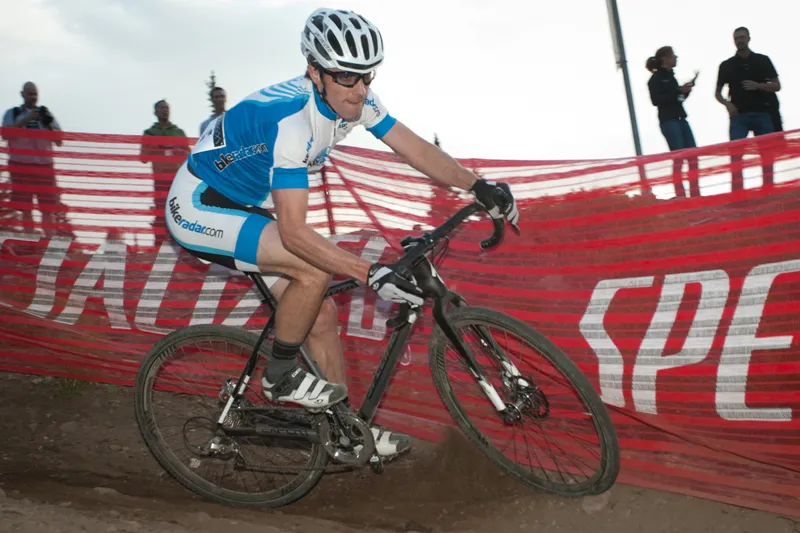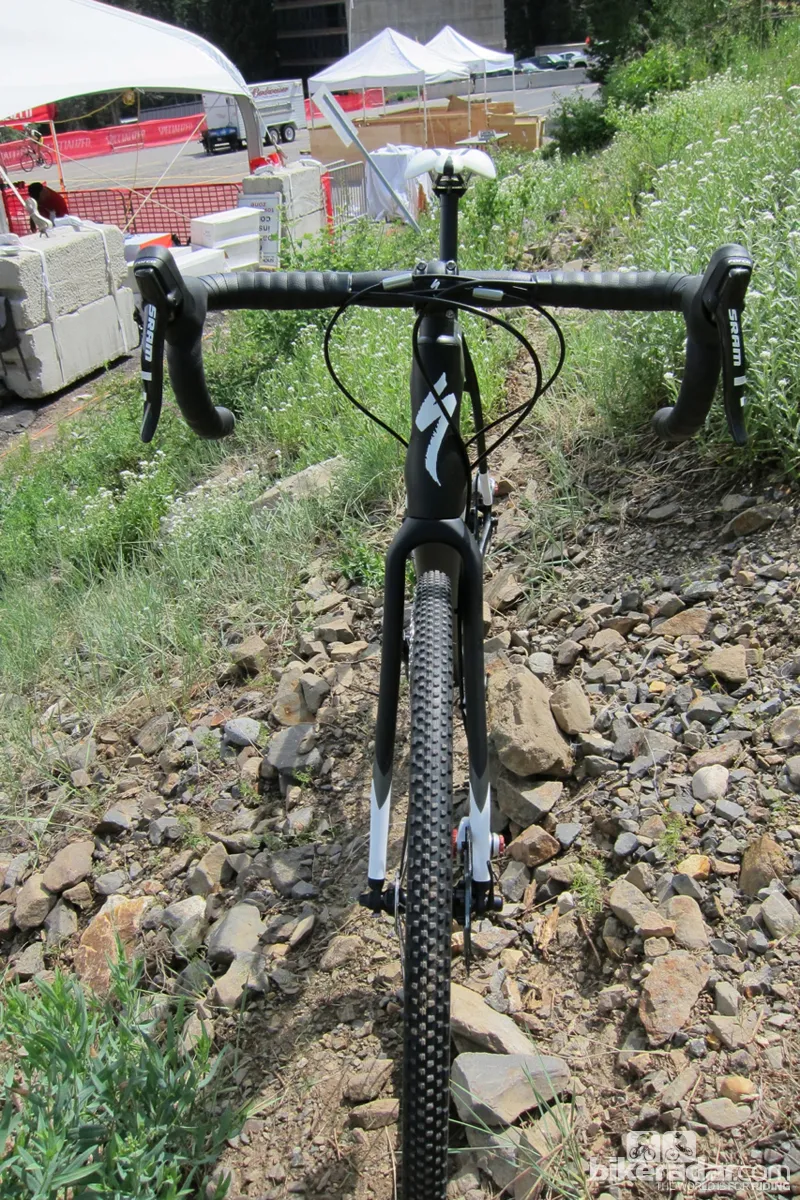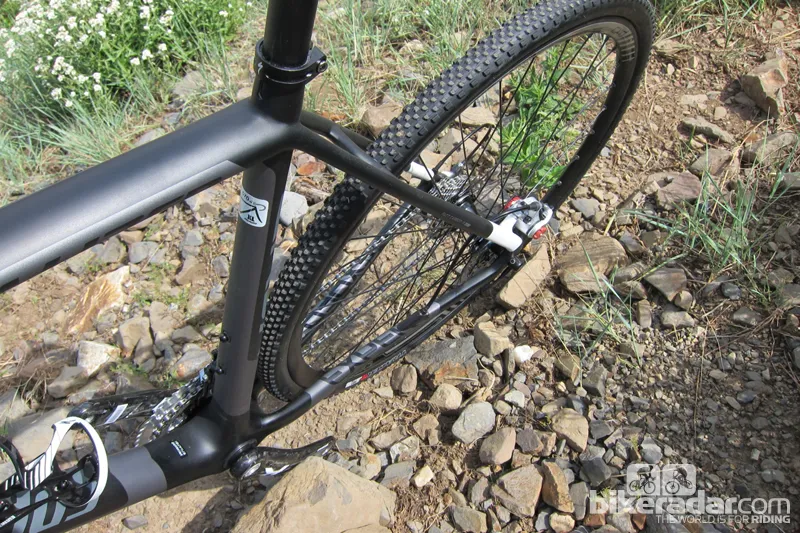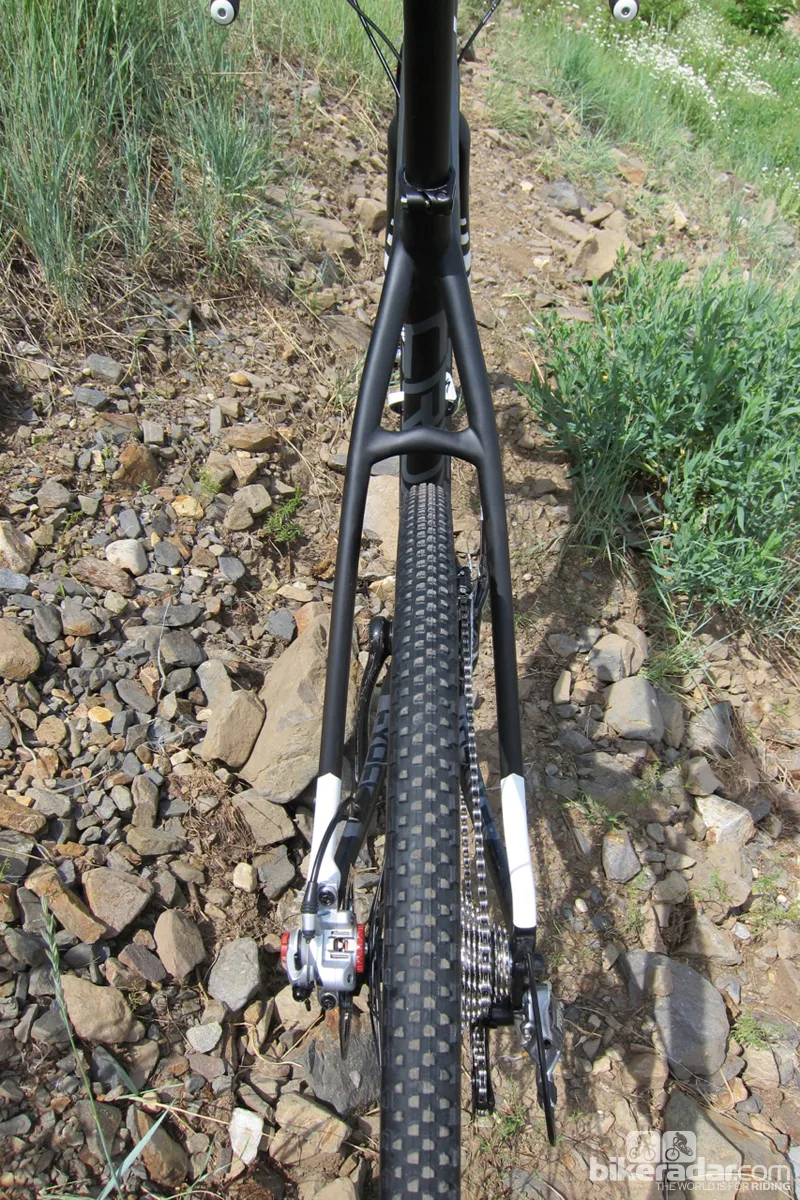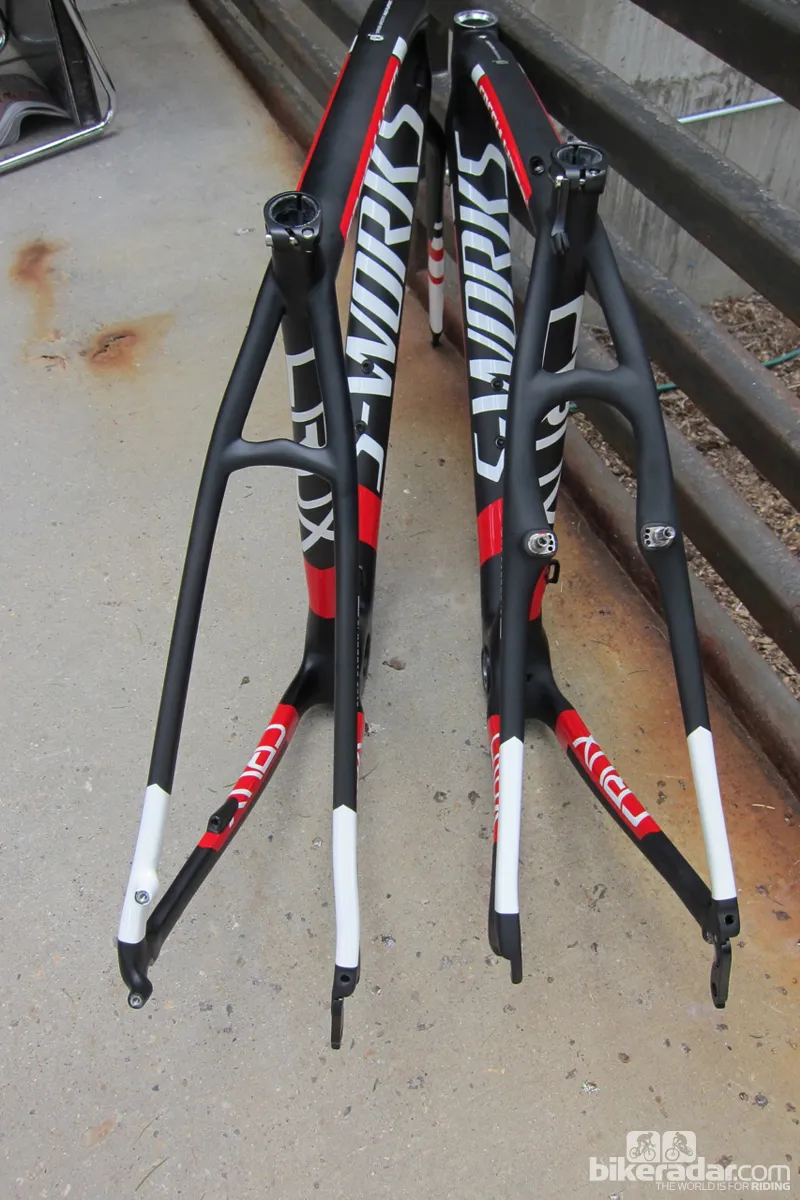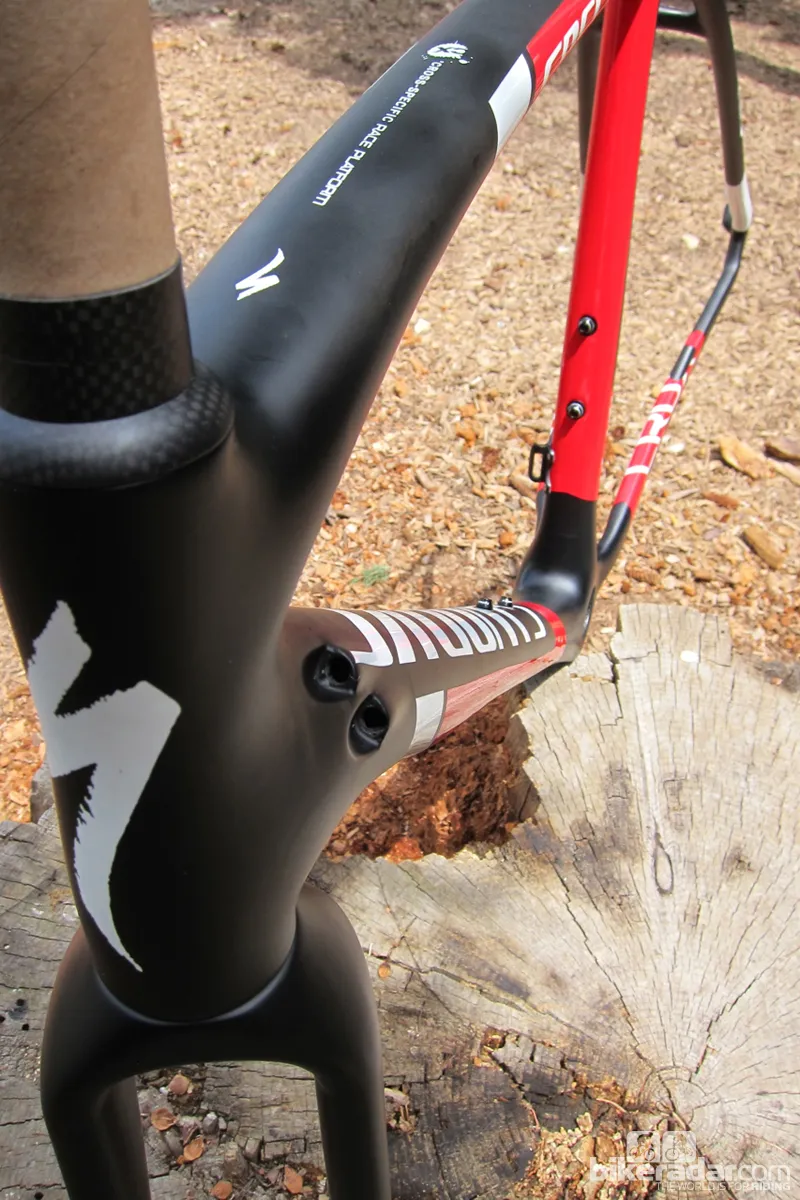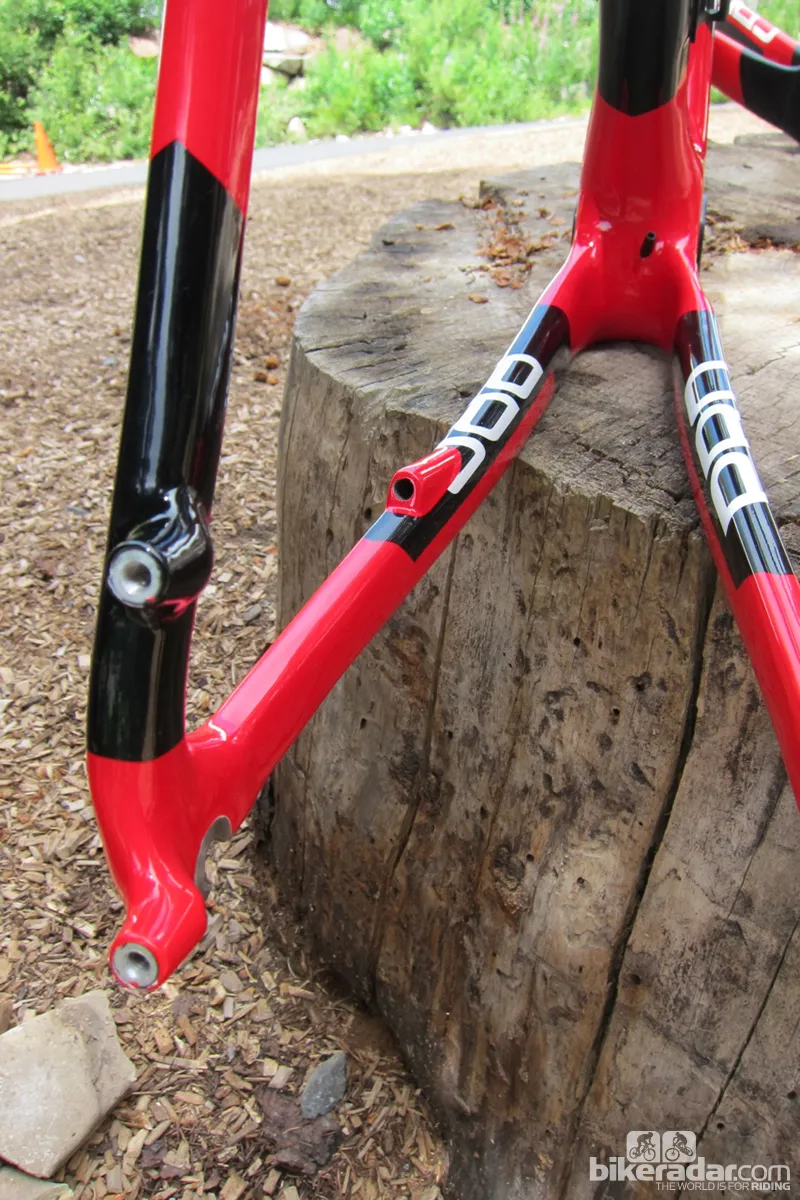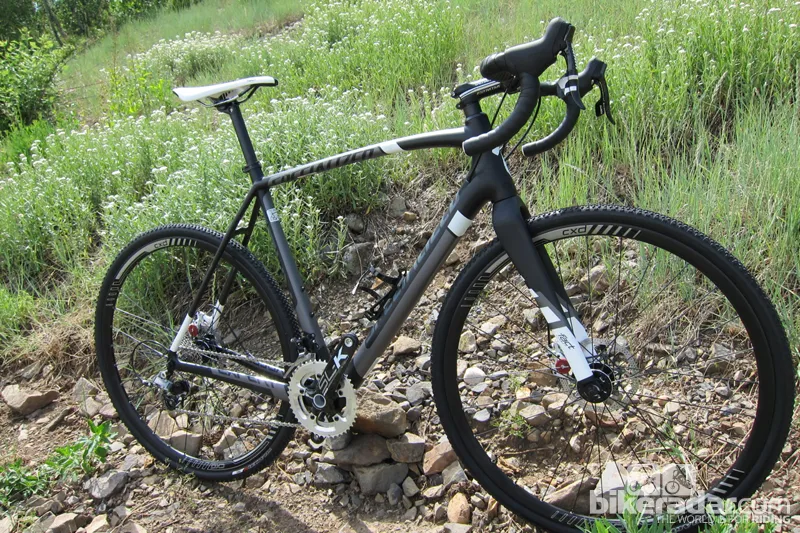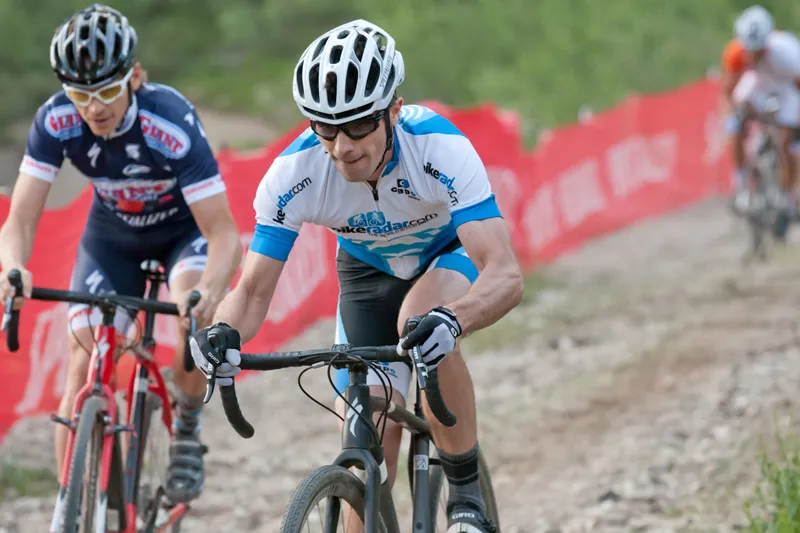There's only one-way to test a cyclo-cross bike, and that's on a cyclo-cross course. Knowing this, Specialized did their best to stage a CX race at their recent 2013 launch. They called it the Crux Crossbird, and we took home second place on a new, stock Crux Expert Carbon Disc.
That position sandwiched us neatly between Specialized Olympian Todd Wells, who won, and Ned 'The Lung' Overend. While the race was 'just for fun' among us media types, it did serve the purpose of creating a race-type first impression of the bike.
Ride & handling: Race-bred American style
While the new Crux Expert Carbon Disc features identical geometry to the E5 Crux frameset we reviewed last season, it makes good on a few of the downsides of that bike. For one, this bike most definitely has the snap we found lacking on the alloy model.
Specialized call this new carbon Crux a "Tarmac for dirt", namely because it relies on a similar one-piece bottom bracket and chain stay assembly design to the one used on the Tarmac road bike. It’s this key piece in the carbon bike – not to mention the material itself – that provides some serious get up and go. Stomp on the pedals and this thing moves. Exactly what we said was lacking and what the pros demanded.
We found the front end on par with the alloy version. It’s by no means soft, and provided all the precision we required. However, there wasn’t the type of gain in stiffness that we experienced out back.
We’d attribute the continuation of the Crux’s comfortable ride to the downsize in lower bearing spec from 1 1/2in to 1 3/8in, and the layup of the carbon. We also found the carbon to be noticeably better than alloy at damping vibrations.
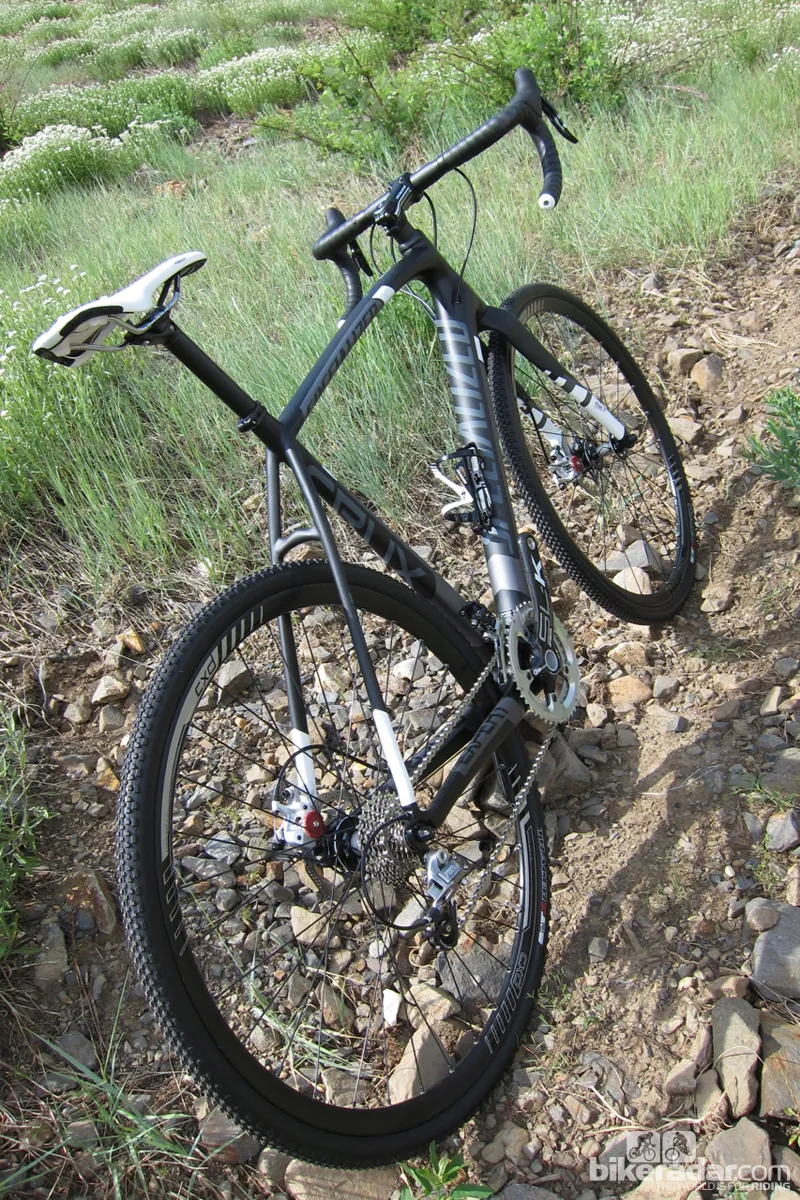
The Expert, Pro Carbon and S-Works version of the Crux framesets vary by material and layup
As we focused on last year, the Crux features an American-style geometry punctuated by a low bottom bracket. For most domestic cyclo-cross riders, this is a good thing. The low bottom bracket and neutral angles add to confidence in cornering, especially when surfaces are slick – we tested the bike on ball bearing-type rock substrate.
As with the alloy model, issues do arise in the worst conditions or when cornering on extreme off-cambers. The pedal strikes on rut walls or high edges of the off-cambers.
As for non-bike features, two stand out. The first is the carbon Crux's weight, or lack thereof – even the Pro 10r carbon model is more than a pound lighter than the E5. When you're shouldering the bike, however, it's offset by the weight of the included DT Axis 4.0 wheels, which aren't light.
The second important feature is the 'Love Handle', a depression on the down tube that acts as a handle when you pick the bike up to shoulder it. Because the carbon down tube is so large, the added effort made to include the handle wasn't lost on us, and we do think it's a benefit. Once up on your shoulder, the flattened top tube and larger down tube make porting the bike quite a comfortable process.

Look closely for the 'Love Handle' grip on the Crux
Frame & equipment: Solid with the exception of the wheels
The Crux Expert Carbon Disc uses Specialized’s second-tier 10r carbon and is said to be about 100g heavier than the S-Works model but with a similar ride feel. Also notable is the fact that the disc frames are roughly 40g lighter than their cantilever specced counterparts.
Both the Expert and S-Works frames use Specialized's FACT IS construction, which pairs modular monocoque parts assembled with both lugged and wrapped joints. The joining method is said to be selected to best fit the stresses seen in the zone.
All four new carbon Crux frames (cantilever and disc brake S-Works and Expert frames) feature new forks, which use the new taper size and are claimed to weigh in under 500g.
Mud clearance has been balanced with the desire for short chain stays, and internal cable routing is very clean and smooth on the Expert Disc. In fact, it’s so good that we attribute it to helping better the performance of the mechanical disc brakes, which can vary greatly due to cable routing and the amount of compression in the system. That's especially true for the rear brake.

Good company on the podium – your author (left) with Specialized's Todd Wells (centre) and Ned Overend
The only component we'd look to upgrade on the Crux Expert Carbon Disc is the wheelset. Granted, we're cyclo-cross wheel snobs. The stock DT Swiss Axis 4.0 disc wheels ride quite well, but they’re also fairly heavy. That said, they'll make for an admirable training wheelset.
Shifting and braking is taken care of by SRAM’s Force transmission, and Avid BB7 mechanical disc brakes. Specialized do sub in an FSA SL-K BB30 crank to fit their OSBB bottom bracket (PF30).
We'd spec the Force components on our own CX bike if balancing performance and cost. And, as we’ve previously stated, the cable routing on the new Crux boosts the Avid mechanical disc brakes to some of the best performance we’ve experienced from the model.

Impressively clean disc line routing on the Crux
The alloy Specialized cockpit components and Body Geometry saddle complemented the overall performance of the bike. And we were pleasantly surprised by the performance of the Tracer tires, at 35psi on the rocky track used for the Crossbirds race.
